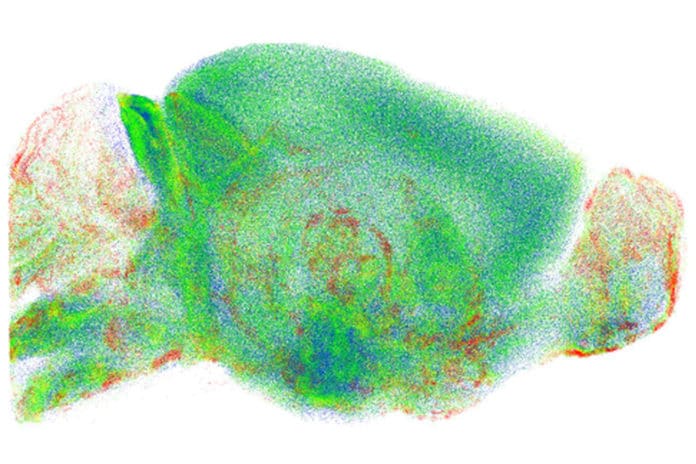Studying the brain’s anatomy and its cellular structure is one of the greatest challenges in neuroscience. Thanks to scientists in UK and Germany, they have come up with a way to shed light on intricate details of the brain.
Using a Rapid Autofocus method via Pupil-split Image phase Detection (or RAPID), scientists made a quantitative analysis of the mouse brain. They analyzed brain-wide architecture possible at the subcellular level.
Scientists also proposed a new auto-focusing technology using RAPID. The technology can automatically correct the misalignments introduced by the sample itself in real-time. In cubic centimeter-sized, cleared samples, such as intact mouse brains, the autofocusing removes image degradation to enable enhanced quantitative analyses.
The high-resolution RAPID allowed scientists to examine whole-brain scale problems previously analyzed only in small, local areas. Scientists discovered how cells organize themselves in spatial clusters.
When the analysis was performed on microglia, a set of cells with different functions, significant differences were found between various brain regions.
Dr. Ludovico Silvestri, the first author of the study, said, “The currently employed method of light-sheet microscopy combined with chemical protocols capable of rendering biological tissues transparent fails to maintain high resolution in samples larger than a few hundred microns.”
Dr. Leonardo Sacconi, of the National Institute of Optics of the National Research Council (CNR-INO), a co-author of the paper, added: “Beyond these dimensions, the biological tissue begins to behave like a lens, disrupting the alignment of the microscope and consequently making the images blurry.”
To develop this method, scientists took inspiration from the optical autofocus systems found in reflex cameras. In these cameras, a set of prisms and lenses transforms the blur of the image into a lateral movement. This allows the alignment of the microscope to be stabilized in real-time, producing sharper, more richly detailed images.
Dr. Caroline Müllenbroich, a Marie Skłodowska Curie fellow and lecturer at the University of Glasgow’s School of Physics and Astronomy, said, “While we originally invented RAPID for light-sheet microscopy, this autofocusing technology is suitable for all wide-field microscopy techniques. It is very versatile and samples agnostic with multiple applications beyond neuroscience.”
Journal Reference:
- L. Silvestri et al., Universal autofocus for quantitative volumetric microscopy of whole mouse brains, Nature Methods (2021). DOI: 10.1038/s41592-021-01208-1
